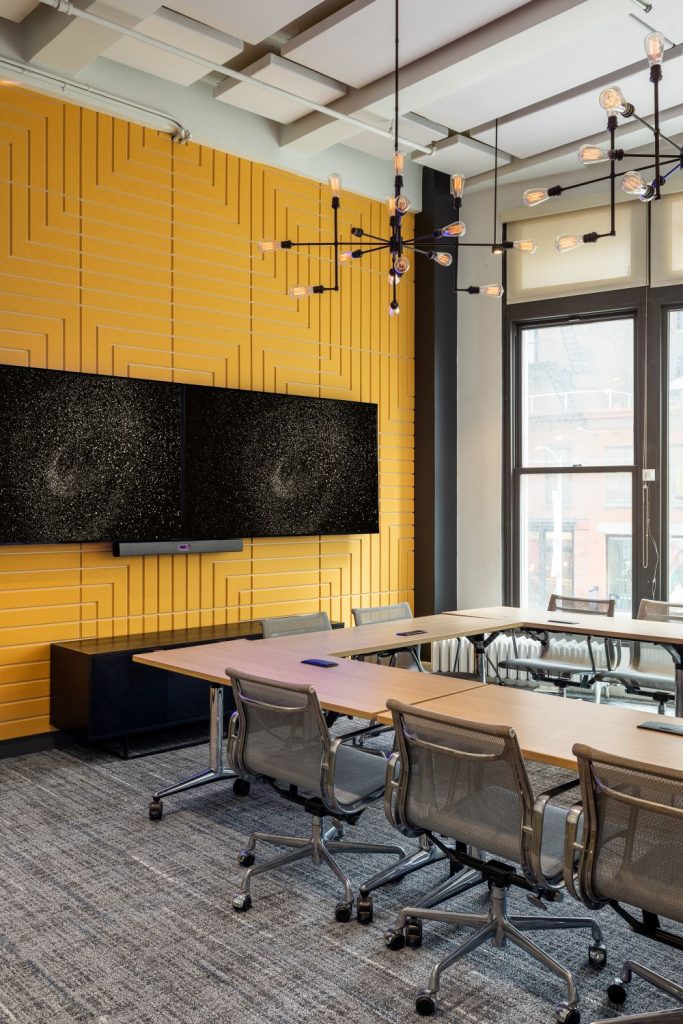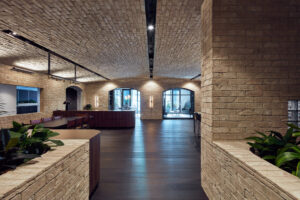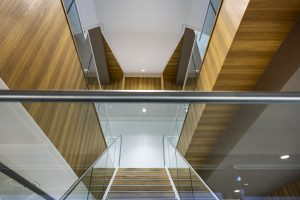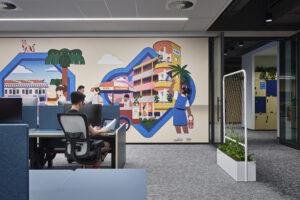Finding the Perfect Office Space in Manhattan: A Decision-Maker’s Guide.

Selecting the right office space NYC location can make or break your business success in Manhattan. With over 450 million square feet of office inventory across diverse neighborhoods, each offering distinct advantages and challenges, the decision requires strategic thinking beyond simple square footage calculations. This comprehensive guide provides decision-makers with the practical insights needed to navigate Manhattan’s complex commercial real estate landscape and secure spaces that drive business growth.
Understanding Manhattan’s Office Market Fundamentals
Manhattan’s office market operates unlike any other in the world, with unique dynamics that directly impact your location strategy. The borough’s commercial real estate landscape is experiencing a dramatic transformation, with availability rates dropping to 16.4% in Q2 2025, the lowest in over four years according to Avison Young data.
This improvement reflects renewed confidence among businesses expanding their Manhattan presence. However, the market remains bifurcated, with trophy properties commanding premium rents while Class B and C buildings offer significant value opportunities for cost-conscious companies.
Understanding these fundamentals becomes crucial when evaluating potential locations. The flight to quality continues to define tenant behavior, with companies prioritizing modern amenities, flexible layouts, and wellness-focused environments over pure cost considerations. This shift has particularly benefited newer developments and recently renovated properties that can offer the sophisticated infrastructure today’s workforce demands.
Market Timing and Negotiation Leverage
Current market conditions present unique advantages for tenants willing to commit to longer-term leases. Landlords are offering unprecedented concession packages, including tenant improvement allowances that can cover 50-100% of build-out costs in select buildings. Understanding how to leverage these conditions requires expertise in both market timing and negotiation strategy.
Neighborhood Analysis: Strategic Location Selection
Manhattan’s diverse neighborhoods each offer distinct advantages for different business types, making location selection a critical strategic decision that extends far beyond rent considerations.
Midtown Manhattan: The Traditional Power Center
Midtown remains Manhattan’s premium business district, home to Fortune 500 headquarters and major financial institutions. Trophy Class A buildings here command $120-$125 per square foot, while generic Class A space ranges from $55-$105 per square foot.
Advantages: Unparalleled transportation access, prestigious business addresses, extensive dining and entertainment options, proximity to major clients and partners.
Considerations: Premium pricing, intense competition for desirable spaces, heavy pedestrian traffic, limited parking availability.
Best For: Financial services, legal firms, consulting companies, corporate headquarters requiring prestigious addresses.
Financial District: Value and Transformation
The Financial District presents compelling opportunities with vacancy rates exceeding 24% and asking rents among Manhattan’s lowest. This transitional market creates unique value propositions for businesses willing to embrace an evolving neighborhood.
Advantages: Significantly below-market rents, historic architecture with character, growing residential population, waterfront proximity.
Considerations: Limited evening and weekend activity, fewer dining options, ongoing market uncertainty.
Best For: Startups, technology companies, creative agencies, businesses prioritizing cost efficiency over prestige.
Hudson Yards and Far West Side: The Future of Manhattan Office Space
Hudson Yards represents Manhattan’s newest business district, with market values growing 56% among top office zip codes. This master-planned development offers state-of-the-art facilities with direct transportation access and comprehensive amenities.
Advantages: Newest building inventory, cutting-edge technology infrastructure, integrated retail and cultural amenities, excellent subway and regional rail connections.
Considerations: Premium pricing similar to traditional Midtown, limited dining variety compared to established districts, newer neighborhood identity.
Best For: Technology companies, media firms, corporations seeking modern facilities and innovative environments.
Flatiron and Union Square: Creative and Tech Hub
The Flatiron District continues attracting technology and creative companies, with rents expected to climb from $85 to $100 per square foot. The area’s unique architecture and vibrant street life create an appealing environment for innovative businesses.
Advantages: Distinctive architectural character, excellent restaurant and retail scene, proximity to startup ecosystem, relatively accessible pricing.
Considerations: Limited large-format space availability, older building infrastructure in some properties, competitive leasing market.
Best For: Technology startups, advertising agencies, design firms, media companies.
Key Pricing Insights: Comparing Manhattan Submarkets
When evaluating NYC leasing trends, understanding the pricing dynamics across neighborhoods provides a clearer picture for decision-makers. Below is a snapshot of average asking rents in 2025:
| Neighborhood | Class A (avg $/SF) | Class B/C (avg $/SF) | Vacancy Rate |
|---|---|---|---|
| Midtown | $95–$125 | $55–$70 | ~13% |
| Financial District (FiDi) | $55–$65 | $40–$50 | ~24% |
| Hudson Yards / Far West | $110–$120 | Limited availability | ~12% |
| Flatiron / Union Square | $85–$100 | $55–$65 | ~15% |
Source: Avison Young, Cushman & Wakefield, CoStar Q2 2025 data
This comparison highlights the trade-offs between prestige, cost efficiency, and vacancy availability. For example, while Midtown commands higher rents, FiDi offers cost-conscious firms significant leverage, whereas Hudson Yards delivers cutting-edge infrastructure at a premium.
Space Planning and Design Considerations
Modern office space NYC selection extends beyond location to encompass how space design impacts productivity, culture, and talent attraction. Understanding these factors helps ensure your space selection supports long-term business objectives.
Layout Efficiency and Flexibility
Contemporary office design prioritizes flexibility over fixed layouts, acknowledging that business needs evolve rapidly. Look for spaces that can accommodate multiple configurations without major reconstruction. Open floor plates with minimal permanent structures offer maximum adaptability for future growth or reorganization.
Consider how layout efficiency impacts your cost per employee. While premium locations may command higher rents, superior layout efficiency can reduce your actual cost per workstation when properly planned.
Technology Infrastructure Requirements
Manhattan’s newest buildings offer advanced technology infrastructure, but older properties may require significant upgrades to support modern business operations. Evaluate existing systems for:
Connectivity: Fiber optic availability, redundant internet service providers, wireless infrastructure capacity.
Power and HVAC: Adequate power density for modern equipment, efficient climate control systems, backup power capabilities.
Security Systems: Access control integration, surveillance capabilities, visitor management systems.
Amenity Integration and Employee Experience
Today’s workforce expects sophisticated amenities that support both productivity and wellness. Properties offering comprehensive amenity packages often command rental premiums of 10-15% but can significantly impact talent attraction and retention.
Essential Amenities: Fitness facilities, conference centers, outdoor spaces, food service options, concierge services.
Wellness Features: Natural light maximization, air quality monitoring, ergonomic design elements, quiet zones for focused work.
Financial Analysis and Budgeting Strategy
Effective commercial real estate decision-making requires comprehensive financial analysis that extends beyond base rent to encompass total occupancy costs and long-term value creation.
Understanding Total Occupancy Costs
Base rent represents only one component of total occupancy expenses. Additional costs include:
Operating Expenses: Building maintenance, utilities, security, common area upkeep typically ranging from $8-15 per square foot annually.
Tenant Improvements: Build-out costs varying from $50-150 per square foot depending on space condition and requirements.
Moving and Transition Costs: Professional services, technology installation, temporary space needs during construction.
Lease Structure Optimization
Manhattan leases typically span 5-10 years, making lease structure optimization crucial for long-term cost management. Key negotiation points include:
Escalation Clauses: Fixed increases versus market-based adjustments, CPI limitations, expense stop provisions.
Expansion Rights: Options for additional space, right of first refusal on contiguous areas, expansion timing flexibility.
Exit Strategies: Subletting rights, assignment provisions, early termination options under specific conditions.
ROI and Business Impact Analysis
Consider how location choice impacts business performance beyond direct real estate costs. Factors include:
Talent Acquisition: Premium locations may reduce recruitment costs and improve candidate quality.
Client Accessibility: Convenient locations can increase client meeting frequency and strengthen relationships.
Operational Efficiency: Proximity to suppliers, partners, and transportation hubs can reduce business travel and logistics costs.
Conclusion: Making Strategic Location Decisions
Finding the perfect office space NYC location requires balancing multiple priorities while maintaining focus on long-term business objectives. Manhattan’s diverse neighborhoods offer distinct advantages for different business types, making strategic location selection crucial for operational success and growth.
The key to successful space selection lies in comprehensive analysis that extends beyond rent considerations to encompass total occupancy costs, business impact, and long-term value creation. With Manhattan’s commercial real estate market experiencing significant transformation, current conditions present unique opportunities for businesses willing to approach their location decisions strategically.
Working with independent project management professionals who understand both market dynamics and implementation complexities ensures your space selection delivers expected returns while avoiding common pitfalls that can significantly impact costs and timelines. In Manhattan’s competitive environment, this comprehensive approach to location selection can provide the strategic advantage needed to thrive in the world’s most dynamic business center.
Sources and References
This guide draws from current market data and industry insights from leading commercial real estate authorities and government sources:
Market Data Sources
- Avison Young Q2 2025 Manhattan Office Market Report
- Cushman & Wakefield New York Area MarketBeats Q2 2025
- Metro Manhattan Commercial Real Estate 2025 Market Analysis
- CommercialCafe National Office Market Report
Government and Institutional Sources
- New York State Comptroller’s Office Market Value Analysis
- Office of the New York City Comptroller Market Research
- NYC Economic Development Corporation Programs: M-CORE Office Building Incentives
Industry Analysis and Trends
Market data compiled as of September 2025. Real estate conditions and pricing are subject to change. For current market intelligence and personalized guidance on Manhattan office space selection, consult with independent commercial real estate professionals who specialize in NYC markets.



